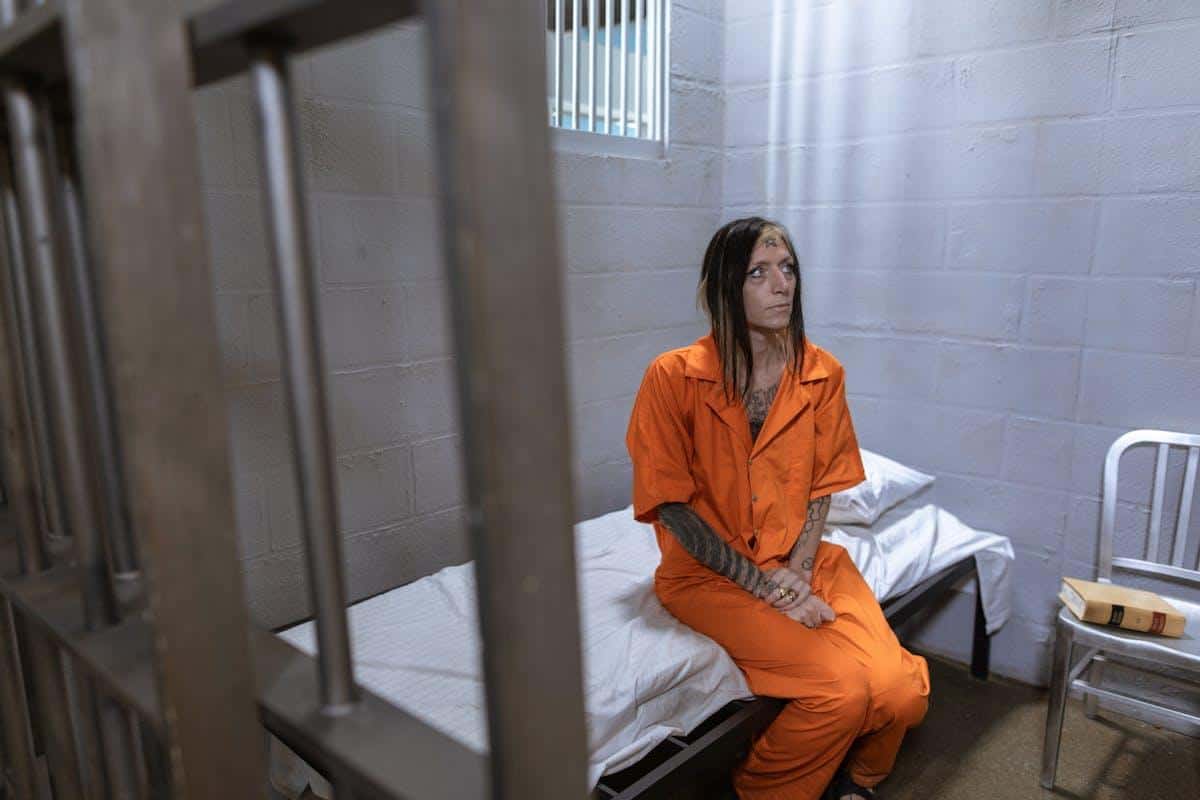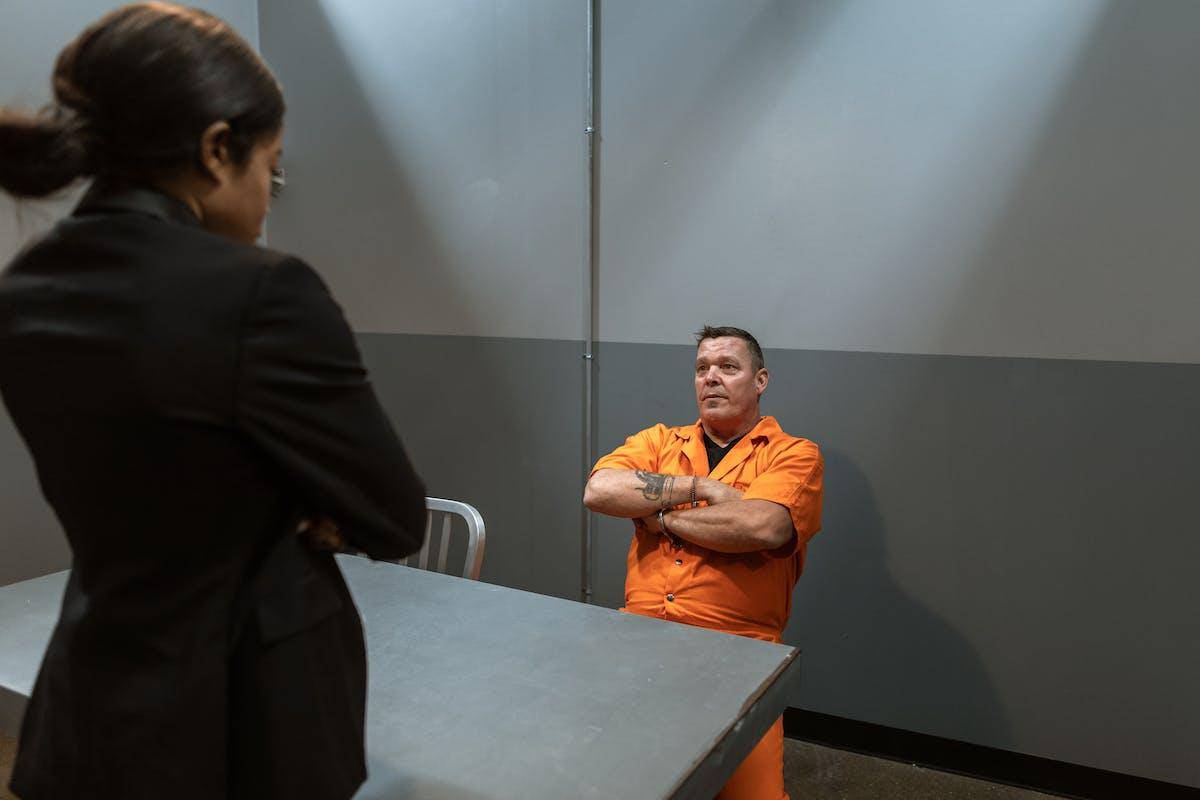Understanding the complexities of inmate visitation rights can be a daunting task, particularly when dealing with the emotionally charged environment that comes with having a loved one in the correctional system. This article aims to demystify these complexities and provide clear, useful information on inmate visitation rights in Orange County, CA.
In the world of corrections and rehabilitation, maintaining connections between inmates and their families or loved ones is significant in encouraging positive behavioral change and enhancing their social reintegration post-release. It’s not just about making it possible for you to see your incarcerated loved one but fundamentally about empowering both parties through an understanding of the legalities underpinning inmate visitation.
However, navigating through these intricacies can be overwhelming-often entwined in laws, regulations, stipulations, and exceptions that appear difficult to understand or remember.
This guide intends to simplify those complexities associated with inmate visitation rights. It acknowledges that convoluted legal jargon can often compound the stressors already experienced by individuals dealing with incarceration matters. That’s why we’ve designed this walkthrough-to decode information relating to Inmate Visitation Rights Orange County CA into easily understandable concepts and actionable steps-for you.
By gaining knowledge of these rights, individuals are given power: empowerment to make informed decisions; empowerment to create an enabling environment for incarcerated loved ones; empowerment toward advocating for just treatment within the correctional system. Let’s get started on this journey of understanding together.
The Importance of Inmate Visitation
Understanding the necessity and benefits of inmate visitation becomes imperative when someone we know is incarcerated. If navigated properly, it can provide a significant positive influence for both inmates and their loved ones.
Research published in Criminal Justice and Behavior suggested that maintaining contact with family and friends during incarceration could reduce the recidivism rate. The study concluded that inmates who received regular visits while serving their time were less likely to re-offend following their release.
It provides an essential psychological benefit by reducing feelings of isolation, depression, and anxiety in inmates. Contact with loved ones serves as a motivation for good behavior within the correctional facility as it strengthens a sense of love, connection, social acceptance, and support.
- Emotional benefits: The emotional toll that incarceration extracts from an individual is immeasurable. Regular visitations help keep emotions balanced by reconnecting inmates with their families or friends – creating moments of joy amidst hardships. This contact reminds inmates they are connected to a world beyond prison walls which helps maintain hope.
- Social Benefits: Inmate visitation rights serve a crucial social purpose too. They promote forward-thinking behaviors like responsibility, accountability, and XTY among prisoners by keeping them rooted in societal norms through engagements with people from the outside world.
There are also significant perks for the visitors themselves too. For instance:
- Appearance means care: The act of visiting communicates care toward the inmate – conveying that they matter and not forgotten.
- Better grasp on reality: The visitor gets a better insight into the lives of their incarcerated loved ones.
- closing mental distances: The emotional gap caused due to physical separation gets bridged by seeing them face-to-face, promoting healing in relationships.
In closing, the importance of exercising inmate visitation rights revolves around the mental, emotional and relational well-being of both parties involved. There’s much more than just maintaining relationships while inside the system; it encourages behavioral reform in inmates and provides solace during difficult times for their loved ones. Therefore, understanding these visitation rights is essential to optimizing benefits while dealing with incarceration.
Defining Inmate Visitation Rights
Understanding what constitutes inmate visitation rights in Orange County, CA is essential for both the incarcerated individual and their loved ones. Fundamentally, these rights provide an opportunity for inmates to maintain personal relationships and connections with their family members, friends, and legal representatives outside of the correctional facility.
Visitation rights can be expressed through face-to-face contact visits, non-contact visits (like speaking through a glass partition), or virtual visits (such as over video calls). Under certain circumstances and depending on the security level of the inmate, conjugal or extended family visits may also be allowed.
Accessing inmate visitation rights comes with a set number of prerequisites that must be satisfied. Firstly, you have to be on the inmate’s approved visitor list. This typically involves filing paperwork ahead of time and undergoing a background check.
Minors under 18 years old must usually be accompanied by an adult that is also listed on the approved visitor list. The inmate themselves can generally have say in who goes onto this list. However, certain categories of people – such as former inmates, potential co-defendants or individuals with restraining orders – could potentially be barred from visiting.
To better understand how this process works, consider this illustration: Jane has a brother John who is serving time in an Orange County jail. If Jane wishes to visit John, she first needs to submit a request to get added onto John’s approved visitor list and pass any required background checks. Once approved she’ll then need to adhere strictly to set visiting hours and rules such as dress code restrictions during her visits.
| Key Point | Description |
|---|---|
| Type of Visits | Contact / Non-contact / Virtual / Conjugal visits where applicable |
| Prerequisites | Inclusion on approved visitor list, successful pass of background check, adherence to facility rules and visitation schedules |
| Potential Restrictions | Former inmates or potential co-defendants may be barred from visiting; restrictions depending on the security level of the inmate |
The Legal Framework Governing Inmate Visitation Rights
Understanding the legal framework that governs inmate visitation rights is crucial in figuring out how to navigate this emotionally fraught territory. In Orange County, California, these laws and regulations are based on both state level legislation and county-specific policies. At the core of these rules is the idea that, despite their imprisonment, inmates still retain fundamental human rights including the right to maintain personal relationships, albeit under carefully regulated conditions.

Legally speaking, visitation rights are not construed as absolute but are subject to limitations based on numerous factors such as security concerns, prison resources, or behavioral issues relating to individual inmates. According to California Penal Code Section 2601(c), for example, it specifies that inmates have the right to have personal visits unless a warden determines that these visits would pose direct threats to security of the institution or safety of individuals.
It also provides leeway for wardens to impose reasonable restrictions on visits so long as they align with preservation of internal order and discipline and maintaining institutional security. On top of this overarching guideline, Orange County correctional facilities may also implement their own set of policies which can vary from facility to facility.
Furthermore, it’s important that loved ones understand these inmate visitation rights within the context of constitutional law. While an inmate’s liberty is significantly curtailed by virtue of being in prison, certain constitutional protections still apply – namely under the First and Fourteenth Amendments which protect freedom of speech and association as well as provide for equal protection under law respectively.
Consequently, any restrictions or limitations placed on visitation should be content-neutral; they should not discriminate based on race or religion or punish persons because of their views or beliefs. It means authorities cannot limit visitors solely because they don’t like what those guests might say or believe; limits must be centered objectively around maintaining security and order within the prison environment.
In short: while prison officials have latitude when addressing matters related to maintaining order within correctional facilities – including putting into place certain limits on visitation – inmates and their visitors in Orange County are provided with legal protections under both the state penitentiary laws and the U.S. Constitution which ensure they still have the right to maintain personal connections through visits.
Procedure to Exercise Inmate Visitation Rights
Arranging a Visit
Understanding the process of planning an inmate visitation in Orange County, CA can alleviate much of the anxiety and uncertainty associated with visits. Typically, first-time visitors must complete a visitor application form, either online or offline depending on the correctional facility’s policy. This form requires personal information including your name, identification number (such as driver license number), address, and relationship to the inmate.
In some cases, you might also be required to list all previous criminal convictions. It’s important to ensure all information is accurate and honest to avoid disapproval.
After submitting the application form, you should expect a response within several weeks as each form undergoes a background check process. Approved visitors will be added to the inmate’s visitation list which usually allows for two adult visitors per visit.
Rules and Procedures for Approvals
Upon approval, it is essential to familiarize yourself with specific rules regarding visit hours and conduct. Visitation hours typically vary by facility and dependent also on the inmate’s classification level. Beyond this timeframe rule, appropriate dressing guidelines such as avoiding see-through clothing or anything that could be interpreted as gang symbols are common regulations enforced across prisons.
Certain items are often prohibited in visitation areas including electronics like cell phones or cameras and contraband substances like drugs or weapons. These measures are designed to maintain security and orderliness in these facilities.
While conversations won’t typically be monitored word-for-word during your visit unless there is suspicion of illegal activity, staffers may interrupt or end your meeting if they deem your behavior inappropriate-so understanding these rules before your visit can help you avoid such scenarios.
Documents Required
When visiting an inmate in any correctional facility in Orange County, CA it is mandatory that you carry government-issued documentation with a photo ID such as a Driver License or Passport. Some facilities may also require proof of current address such as a utility bill or credit card statement. Also note, minors are typically required to present a birth certificate and be accompanied by an adult who may need to show proof of guardianship.
Before making your visit, it is advisable to confirm the specific requirements of the correctional facility where the inmate resides because policies can differ from one place to another.
Restrictions and Limitations
While the rights of the inmates to receive visitors are acknowledged and respected, it’s important to understand that there are certain limitations and restrictions associated with it. The Department of Corrections in Orange County, CA has stipulated rules which cater to maintaining order for the safety of both inmates and visitors. Abiding by these rules is crucial for seamless visitations.
The most common reasons for denying or limiting visitation rights can include security issues, restriction as a disciplinary action, or disruption of the prison routine. For instance:
- Security Concerns: If the correctional facility perceives any visitor as a potential threat to the institution’s or inmate’s safety or security, they can deny visitation rights.
- Disciplinary Actions: In particular scenarios where an inmate’s behavior has been found disruptive or detrimental to prison peace; visitation rights may be suspended as part of disciplinary action.
- Disruption of Prison Routine: There might be cases in which authorities deem it necessary to defer visitation to ensure smooth functioning of the facility.
These limitations are in place not only for maintaining good order within correctional walls but also for ensuring that every individual inside the corrections facility – both professionals working there and inmates – remains safe. Visitors need to adhere strictly to all rules laid out by correctional facilities including specific times for visits, allowed items while visiting and dress codes among others.
The importance of adherence extends past immediate visitation too. Frequent infringements may lead to more severe penalties like temporary ban from visiting any inmate across all Orange County facilities. Therefore, knowing these rules and following them diligently ensures that you maintain your privilege to continue providing support through regular visits.
Rights, Respect, and Responsibilities
While inmate visitation rights are an important pillar of the correctional system in Orange County, CA, it is essential to understand the protocol and conduct expected during these interactions. Maintaining mutual respect and adhering to set rules are vital aspects of visitation that help ensure these rights can be exercised consistently.
There are specific rights and responsibilities that both inmates and visitors possess when it comes to visitations. Inmates have the right to receive pre-approved visits unless they violate prison protocol or if some security issues prevent the visit. The responsibility of behavior falls upon them as their actions directly influence their eligibility for future visits. They must follow all facility rules, respect visitors, staff, other inmates, and avoid any form of misdemeanors during visits.

Visitors Also Carry Certain Rights Like,
- The right to a safe environment during the visit.
- The right to privacy in conversation, within reasonable limits.
- The right to bring along minors if they are immediate family members and with prior approval from the authorities.
Additionally, they bear some uncompromisable responsibilities which include:
- Maintaining respectful demeanor towards staff, inmates, and other visitors.
- Adhering strictly to visiting hours and all guidelines provided by the correctional facility.
- Refraining from bringing prohibited items into the facility.
- Dressing appropriately as per prescribed standards by each correctional facility.
Prioritizing respect between parties involved in these interactions ensures a seamless process and safeguards inmate visitation privileges. Breaches often lead to consequences given that maintaining order within such a setting is paramount for officials.
Respect, therefore, goes beyond cordial exchanges between visitors/inmate-it’s about maintaining peace within an environment that already has its intricate challenges. Having known this detailed information on basic Rights & Responsibilities during Inmate Visitations rigs you better prepared and less anxious, thereby ensuring your interactions do not contribute negatively to the well-being and rehabilitation process of your loved one.
Advocacy for Inmate Visitation Rights
Family support remains critical for the physiological wellbeing of inmates, and advocacy for their rights is a crucial part of that support system. Advocating for inmate visitation rights involves more than just appealing to the law, it entails thoughtful lobbying, bridging communication gaps between detainees and jail administrators, and relentless effort to keep correctional facilities accountable.
Advocacy starts with a robust understanding of legal provisions. To effectively lobby for better inmate visitation rights in Orange County CA, advocates should acquaint themselves with the existing laws governing inmate rights at state and federal level. The US constitution under the 8th Amendment forbids cruel and unusual punishment which has been interpreted into allowing reasonable visitations in several court cases. Knowledge about these judicial precedents can be leveraged while advocating.
Reaching out to organizations committed to prisoner’s rights such as American Civil Liberties Union (ACLU), National Prison Project or California based prisoners’ right bodies can offer resources and avenues for advocacy. ACLU’s National Prison Project is actively involved in litigation, public education, and advocacy focusing on improving detention conditions. Affiliating oneself with these agencies could increase the impact of your advocacy efforts providing a louder voice to your demands.
Loved ones can also consider writing letters or emails to local representatives detailing specific issues related to visitation rights they believe need amendments; this may induce policy changes helping improve prison conditions long-term.
| Advocacy Actions | Potential Impact |
|---|---|
| Understanding Legal Provisions | Puts power behind your demands – enables you to argue within the legal framework. |
| Associating with Prisoner’s Right Bodies | Multiplies your voice – merges your efforts with widespread campaigns increasing their effectiveness. |
| Writing Letters to Representatives | May induce policy changes – if it gains sufficient traction it could lead to long-term amendments in prison conditions. |
Public awareness is another tool. Initiating and supporting public campaigns, participating in rallies or candlelight vigils can garner public support and put pressure on the relevant authorities to maintain or enhance visitation rights within the Orange County CA correctional facilities.
While these measures may seem overwhelming at first glance, bear in mind that even minimal contributions matter. After all, persistent drops wear away the stone. It’s about collective efforts; every little step you take gets us closer to a better future where inmates’ human rights are acknowledged, respected, and upheld.
Expert Advice
Advice From Legal Professionals
Legal professionals offer an invaluable source of advice and guidance when it comes to understanding and leveraging inmate visitation rights effectively. Firstly, it’s critical to be fully cognizant of the legal framework governing prison visits. This includes the stipulated visiting schedule, dress code regulations, and provisions for any special assistance such as language translation services, which can be leveraged if needed.

Secondly, legal experts often advise individuals to prepare in advance for each visit by understanding what they can bring along with them (for example some facilities allow food items while others do not), whether approved supplies can be provided to inmates during visits, and if there are restrictions on who may visit (some facilities have age limits for children).
Lastly, they emphasize documenting all interactions with prison authorities because it provides accountability. In cases where a visitor’s rights are violated or are obstructed without valid reason, documentation can serve as evidence in formal complaints or potential lawsuits.
Perspective From Psychologists
Psychologists underline the emotional aspect of prison visits. They suggest that loved ones should openly discuss their feelings before each visit to manage expectations from both sides effectively. It is natural to feel a wide range of emotions like resentment, fear, guilt or grief, hence the importance of open discussions.
Building on this perspective, psychologists often stress that maintaining continuity in relationships is crucial for both parties’ mental health during such challenging times. Loved ones should try and provide reassurance about their familial or social roles despite their present circumstance – reinforcement of identity outside their inmate status helps bolster inmate morale.
Additionally, psychologists recommend exploring various forms of communication beyond just visitation; letters and calls too are integral parts of sustaining relationships.
Tips From Experienced Individuals
Individuals experienced with prison system nuances also offer valuable insights into fulfilling experience out of visitations. For instance, they highlight being patient with the process and carrying all required documents, knowing that visitation approvals can take weeks or sometimes months.
Experienced individuals emphasize the importance of adapting to circumstances. One key example: children should be appropriately prepared about the prison environment before taking them for a visit so they are not traumatized by unfamiliar settings.
Finally, remember being respectful towards correctional officers and prison staff can go a long way in ensuring regular and uninterrupted visits. Experienced individuals thus echo the mantra – Inmate visitation isn’t just about rights and legalities, but also manners, patience, consistent support and above all, respect for each other’s position in this process.
Conclusion
The Relevance of Understanding Inmate Visitation Rights
Understanding inmate visitation rights is not just beneficial for the inmates themselves, but their loved ones too. This knowledge empowers loved ones to serve as identifiable support systems through personal connections that make a profound difference in an inmate’s rehabilitation.
The complex world of visitation rights can be navigated better when understood holistically. Knowing the prerequisites, corresponding legal framework, and the detailed procedures alongside any limitations allows visits to be planned meticulously and provides clarity about what can be expected throughout the process.
Moreover, comprehending these critical elements helps avoid any unfortunate circumstances that might arise if rules aren’t adhered to or documents are incomplete. An informed visitor understands their responsibilities and respects these rules during their interactions, ensuring visitation privileges are maintained.
Enhancing Rehabilitation Through Consistent Connection
Maintaining a consistent connection via visits plays an instrumental role in rehabilitating inmates and integrating them back into society post-prison. These meetings can help inmates feel grounded while also reminding them of what life outside confinement looks like. They encourage good behavior inside prison walls to continue with visitations and leave room for development on emotional terms too.
From the perspective of friends and family, understanding these rights enables them to play their part more effectively in keeping their loved one uplifted within confines; this often paves optimal pathways once they are ready to rejoin society again thereafter.
Fostering Empathy for Inmate Circumstances
The experience of visiting a correctional facility can also provide many insights into the life borne by an individual within such environments. This experience fosters empathy towards these individuals dealing with exceptional circumstances implying incarceration and reinforces respect toward established rules crucial for maintaining peace within facilities.
Resources
Understanding and exercising inmate visitation rights in Orange County, CA can be challenging but it is crucial for the well-being of both inmates and their loved ones. Encouraging connection and supporting inmates through visits can have a profound psychological, emotional, and social impact on those incarcerated, contributing to a healthier prison environment and more successful reintegration after release.
Moreover, advocating for these rights entails a broader vision that goes beyond individual relationships, aiming at justice reforms that can manifest an overall better correction facilities system.
Encountering this complex system might feel quite daunting initially; nonetheless, the various resources – like legal aid services or counseling centers – available can prove indispensable towards achieving clarity and ease while navigating through this process. They offer guidance regarding the intricate legal framework or advice from experts who’ve had their fair share of experiences with corrections facilities. This specialized assistance helps enlighten individuals about what constitutes as normal procedure versus when one’s rights are being violated.
Online platforms such as support groups or forums also provide an essential support network for folks dealing with incarceration fallout on an intimate level. They give you a platform where you can share personal experiences, exchange ideas, understand others’ perspectives dealing with similar situations hence allowing one to cope better with circumstances associated with loved ones’ imprisonment. Simultaneously these groups also work together to advocate for changes in prison policy that could further enhance visitation rights.
In conclusion, comprehending inmate visitation rights is vital for maintaining connections with incarcerated loved ones while advocating respect and humane treatment during imprisonment. By using available resources whether online or physical organizations, individuals are empowered to better handle these circumstances ensuring they don’t feel alone in their struggle against the complex correctional system in Orange County, CA.
Remember visiting is not just a right but also plays an instrumental role in rehabilitation – not only giving hope to inmates but granting them motivation by showing love and compassion via maintaining familial or friendly connections.
